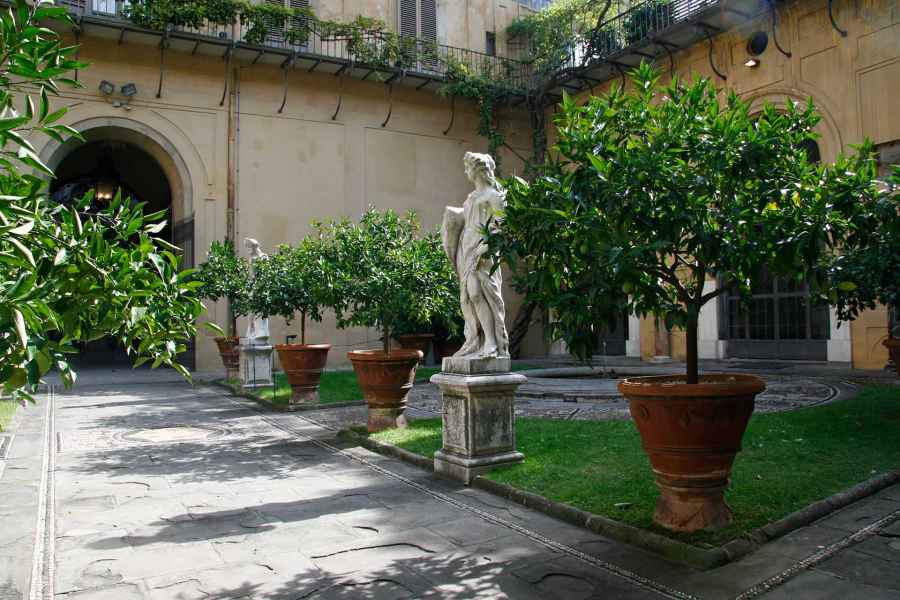Leonardo's relations with the Medicean dynasty were important and long-lasting. Already his father had had a close relationship with members of the family, establishing a solidarity that would continue up to the time of the Medici's return with Giuliano, Piero and Giovanni (Pope Leo X).
Among the numerous members of the Medici family who exerted an influence on Leonardo and the persons close to him were:
• Cosimo the Elder (1389-1464).
• Piero di Cosimo (known as Il Gottoso, the Gouty, 1416-1469: to him and his brother Giovanni (1421-1463) was dedicated, in Brunelleschi's Old Sacristy in San Lorenzo, the funerary monument carved by Verrocchio in 1472 with details that recall Leonardo's Annunciation in the Uffizi.
• Lorenzo di Piero, known as the Magnificent (1449-1492).
• Giuliano di Piero (1453 - assassinated in the conspiracy of 1478): «Painting of a standard with a sprite for Giuliano's joust», one of the works on which Verrocchio and Leonardo collaborated.
• Lorenzo di Pierfrancesco, known as Il Popolano (1463-1503), Lord of Piombino: «Grammar book of Lorenzo de’ Medici» in a memorandum in the Codex Arundel, f. 190v.
• Piero di Lorenzo (1472 - 1503): «To Fiesole with Piero and Leonardo», wrote the Florentine poet Bernardo Bellincioni to Lucrezia Tornabuoni, the mother of the Magnificent. Giovanni di Lorenzo (Pope Leo X, 1475-1521). Giulio di Giuliano (Pope Clement VII, 1478-1534).
• Giuliano di Lorenzo (Duke of Nemours, 1479-1516).
• Lorenzo di Piero (Duke of Urbino, 1492-1519).
In his youth, Leonardo remained at the margins of the philosophical circles, but was undoubtedly at the centre of the artistic ones, such as the Garden of Lorenzo.
Around 1482 he went to Milan to bring as a gift to Ludovico il Moro a silver lyre sent him by Lorenzo the Magnificent. For the Medici he drew the cartoon for a tapestry with Adam and Eve, destined to the King of Portugal. At different times he frequented the Villa of Careggi (in the Rifredi-Terzolle area) and the Villa of Poggio a Caiano. At the time of Cesare Borgia he met with Giuliano again, who was in exile. Starting from 1513, after the return of the Medici and the election of Giovanni to the papal throne, Leonardo, although moving to Rome with Giuliano, returned frequently to his native city. In Florence he studied a new Medicean palace opposite Palazzo Medici Riccardi and a rearrangement of the surrounding quarter, with the church of San Giovannino and the façade of San Lorenzo moved to new locations. He also designed the Medicean Stalls.











